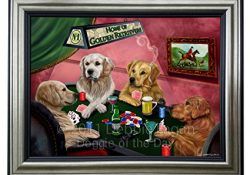In today’s lifestyle, everyone loves to have a pet animal like a dog or a cat, etc. Animals, like humans, are also prone to so many life-threatening diseases like cancer and many others. Nasal cancer is also one of the illnesses among dogs which are also known as Adenocarcinoma. If diagnosed early, it can be easily treated.
“We see more cancer in animals, and some of that probably is related to better care and animals living longer,” said Nicole Northrup, DVM, Dipl. ACVIM, an oncologist and associate professor at the University Of Georgia College Of Veterinary Medicine.
The cancer is malignant which is higher or aggressively metastasis to the local area and can also get transferred to the lungs, lymph nodes and the skull cavity. Nasal cancer is the most commonly found in dogs of urban localization, old dogs and dogs having long snouts.
Chondrosarcoma (CSA) is the most common nasal cancer in dogs according to research, accounting for ten percent of all primary bone tumors. It is malignant, invasive and fast spreading cancer in dogs.
Some types of breeds affected by this cancer are:
– German Short-haired Pointers
– German Shepherds
– Keeshonds
– Basset Hounds
– Collies
– Old English Sheepdogs
– Shetland Sheepdogs
– Airedale Terriers
Causes:
Scientists are working to find the exact reason for this disease, but the exact cause is still unknown. The most common cause of nasal cancer is pollution. In urban areas, many sources are leading to infection like combustion of fuels like kerosene and coal, and its byproducts and smoking. Although other causes can be treated which are risky or cancer-causing? Other reasons may include a mutation in genes, chromosomes.
Males are more prone than females, and old dogs are more likely to be affected by this disease. According to a study, it is also believed that urban dogs are more at risk than rural dogs.
Symptoms:
Symptoms of nasal cancer include:
- The nasal discharge which may contain blood (epistaxis) or pus (mucopurulent) Shortening of breath (dyspnea).
- Deformation of face and inflammation of the nose, Excessive sneezing, rubbing of the nose, weight loss, vision loss, and vomiting.
- Bulgy eyes, behavioral changes, partial loss of movement (paresis), appetite loss and mental capacity loss (obtundation).
- Seizers, Bad breath (halitosis)
Diagnosis:
The veterinary doctors take samples from lymph nodes to detect the cancerous cells or tissues.
The diagnostic methods used to detect nasal cancer are CT scan, which is the ideal method to locate the extent of the tumor, tissue biopsy used to find the location identified, imaging, standard X-Rays, rhinoscopy, blood culture, computed tomography etc.
Treatment:
The initial step in the procedure is pain management which is done by piroxicam an anti-inflammatory and non-steroidal drug. Chemotherapy is used to treat cancer in early stages or for sensitive areas like eyes and brain and also to prolong life and to relieve pain. One other option used to treat dogs tumor is radiation therapy. It is the most commonly used technique in treatment.
According to the tumor type, different doses of radiations are delivered.
Radiation and Chemotherapy: These are not the best options but radiation is still considered a good alternative. Depending on your type you can find following radiation methods:
1.) Stereotactic radiosurgery: It is a one-time treatment which causes less damage to tissues surrounding the tumor.
2.) Stereotactic radiation therapy: It delivers up to three small doses so that no harm is done to the surrounding tissue.
There may be side effects of radiation therapies such as inflammation, running nose, skin shedding, atrophy, seizers, optic nerve degeneration, fibrosis, bone collapse, etc.
Sometimes surgery called rhinotomy, or an incision into the nose to remove the tumor is attempted, this is not a successful method, but it can minimize the chances of infection.
Final Thoughts:
Treating this disease is very hard, and dogs with this condition usually die within 2-7 months of diagnosis.
An affected dog can live to 8-20 months after radiation therapy. The most important part during treatment is to make your dog comfortable. New techniques and treatment methods need to be developed to improve the response and overall survival further.




















